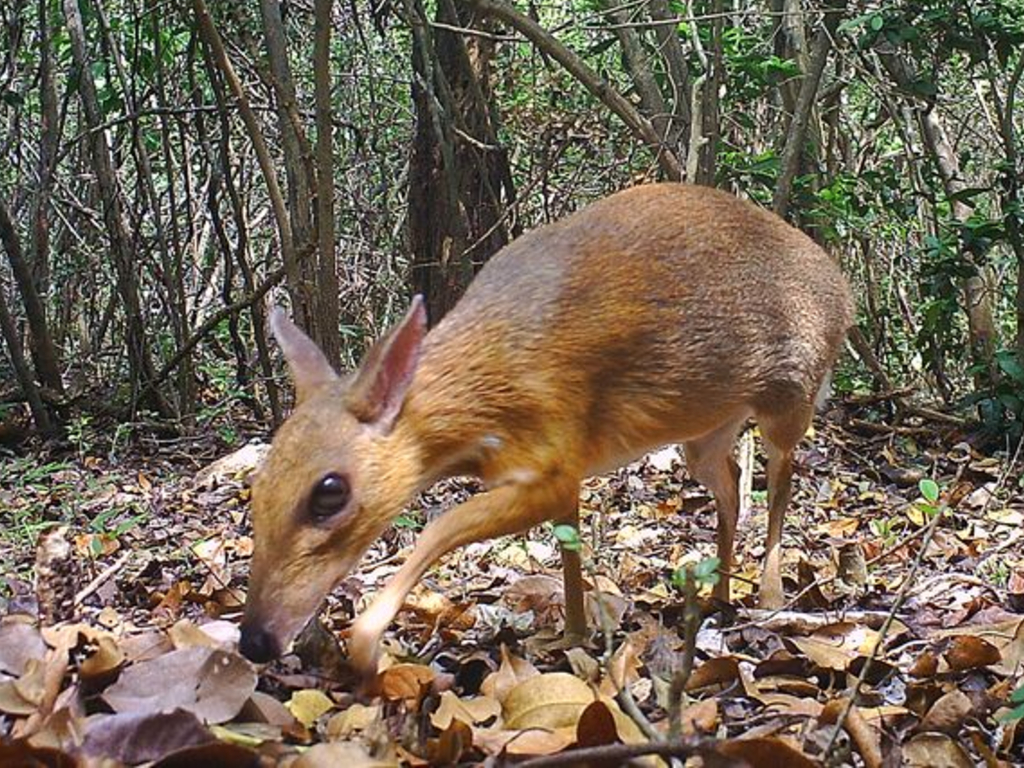A fanged mouse-deer, thought to have disappeared 30 years ago, was recently caught on camera again in Vietnam.

Per a Nature Ecology & Evolution article published on Monday, the animal — known as the silver-backed chevrotain, the Vietnamese mouse-deer or, scientifically, the Tragulus versicolor — was seen in the southeast Asian country, caught on a trap camera.
This spotting has prompted researchers to “urge immediate conservation actions to ensure its survival,” the journal article reads.
The Global Wildlife Conservation (GWC) shared a press release on the animal, describing it as a “deer-like species that is the size of a rabbit, has a silver sheen and has been hanging on in a region of Vietnam ravaged by poaching snakes.”
READ MORE: 1 million species face extinction as humans plunder nature at ‘unprecedented’ rate
“We had no idea what to expect, so I was surprised and overjoyed when we checked the camera traps and saw photographs of a chevrotain with silver flanks,” An Nguyen, associate conservation scientist for GWC and expedition team leader, said in the release.
“For so long this species has seemingly only existed as part of our imagination,” she continued. “Discovering that it is, indeed, still out there, is the first step in ensuring we don’t lose it again, and we’re moving quickly now to figure out how best to protect it.”
It was last recorded, the release continues, more than 25 years ago and is the first mammal on GWC’s list of top 25 most wanted lost species that has been found.
The small animal, described as appearing to walk on the tips of his hooves, was first described in 1910 but was reportedly originally discovered in the late 1800s.
Eighty years later, a fifth specimen was collected by a Russian expedition team in central Vietnam, the release states.
The GWC’s field team set up traps and cameras after a number of local villagers and forest rangers reported sightings of the thought-to-be extinct animal.
As a result, they managed to capture 275 photos of the animal and a following 1,881 photos over five months after setting up 29 extra cameras once its presence in the area was confirmed.
While the animal is best understood as a mouse-deer hybrid, it’s actually neither. Instead, it’s known as the world’s smallest hoofed animal; an ungulate. Its average weight is 10 pounds.
READ MORE: Right whale’s death likely caused by entanglement in Canadian fishing gear
“It is an amazing feat to go from complete lack of knowledge of the wildlife of the Greater Annamites 25 years ago, to now having this question mark of the silver-backed chevrotain resolved,” Barney Long, GWC senior director of species conservation, said in the statement.
“But the work is only beginning with the rediscovery and initial protection measures that have been put in place,” he continued. “Now we need to identify not just a few individuals on camera trap, but one or two sites with sizable populations so that we can actually protect and restore the species.”
The tiny animals were preyed on by leopards, wild dogs and pythons, the Guardian reports.
It’s an excellent opportunity, Asian Species Officer Andrew Tilker said, to gather more information on the species.

“(There’s so) little known about it that the species was one giant question mark,” he told CNN. “We had these two historical localities separated by quite some distance, one in the southern part of Vietnam and the other much further north.”
“But we knew that many people have camera-trapped in the wet evergreen forests and hadn’t seen it,” he continued. “So we thought we should look at the dry forest habitat that’s really different and where not many people have looked.”
Now, conservation efforts are being made to make sure they don’t disappear again and have the opportunity to grow their population.
—




Comments